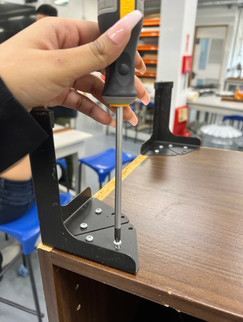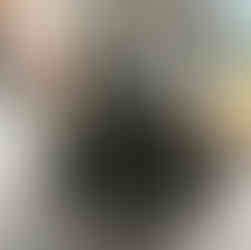Workshop
- Huma Habib
- Nov 30, 2023
- 3 min read
Updated: Dec 14, 2023
We had to start making a model in relation to our experience in Wymering Manor. I took a side table that was already in my room but often neglected. It had paint marks on it and other dents on its surface which rather depicted a story and its history aswell.

The first thing i did was to disassemble all its parts. Hand drawings should be the first step in any design process. Sketching by hand should be preserved, particularly in this day of rapidly advancing technologies. Ideas will come to you while you sketch, not just from your hand but, more significantly, from your heart. Your heart begins to race as soon as you begin drawing a pencil line on paper because you are feeling something. People still sense it even though it's merely a rough boundary. This feeling could not be expressed in that way by a CAD line. You could quickly and button-free create millions of analysis diagrams using hand sketching. Each line serves as a mold for a fresh concept. More ideas come to mind the more you sketch.
through this process i was able to understand various workshop techniques aswell. Since art changes together with society, an artist uses the material language of the world. Our generation needs to take on the role of the flaneurs of old, observing the invisible, gathering the disregarded, and posing questions to the next generation. We have the means to control and comprehend our environment and culture thanks to science and the arts. However, we must not overlook the skills we have developed within ourselves. Technology that can numb our senses and digital excess are pervasive in our lives. What distinguishes humans from other animals is our ability to perceive, hear, and feel the world with complexity and judgment.


Creating a physical model aids in my exploration of the project's potential and alternative solutions. It also sparks the imagination and helps the brain conceive in three dimensions at all times. Similar to hand drawing, when i cut a piece of paper and place it upright, it won't always be a perfect square, rectangle, or round shape; instead, it will take on the shape that comes to mind at that moment. You could always quickly change your mind and create a new piece to accommodate the new notion. Your brain and senses work together when you touch the cards and cut the foam.
One thing is missing from even the finest reproductions of artworks: their actual existence in space and time, as well as their singularity at the location where they are. The history was dictated by the work of art's singular existence which it was exposed to during the duration of its existence. This comprises the
changes in its physical state that it might have experienced over time as well as the numerous ownership changes. The first's remnants are visible solely by physical or chemical analyses, which are not feasible to carry out on a reproduction; ownership transfers are governed by custom that needs to be traced back to the initial circumstances.
Biblography
Bendixen, K., & Benktzon, M. (2015). Design for All in Scandinavia – a strong concept. Applied
Ergonomics, 46, 248-257.
Clarkson, J., Coleman, R., Keates, S., & Lebbon, C. (2003). Inclusive design : Design for the whole
population. London: Springer.
Cuff, D. (1991). Architecture : The story of practice. Cambridge, Mass.: MIT Press



























Comments